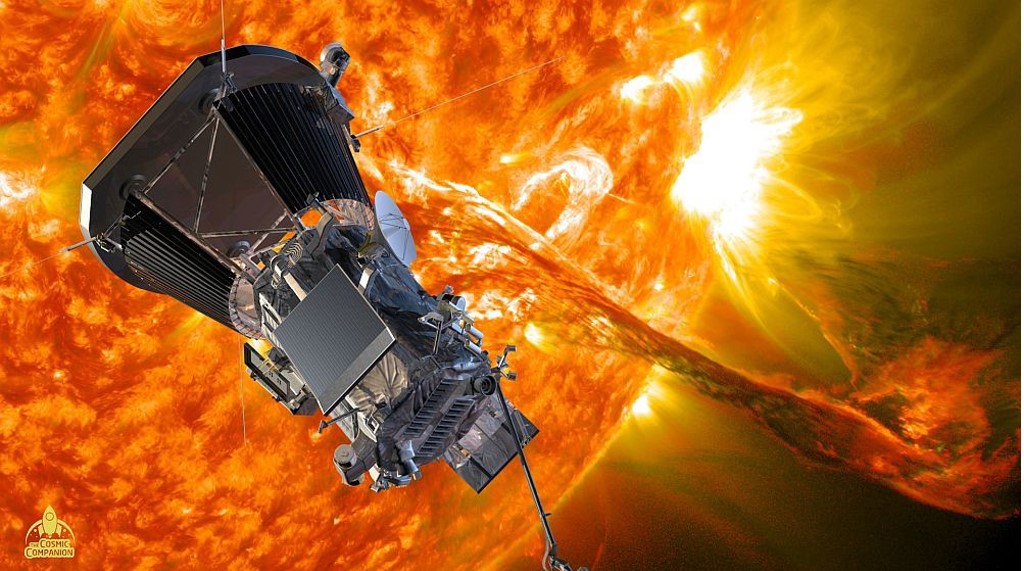Parker Solar Probe is one amongst the most ambitious NASA missions of all time. What is the purpose of this mission? This mission serves to study the atmosphere of the sun, called the Corona. Look, it has nothing to do with the Corona Virus that we know. This mission is named after the scientist Dr. Eugene Parker, who was the first one to theorize about the solar winds. What are the solar winds? The solar wind is a stream of charged particles released from the upper atmosphere of the Sun, called the corona. As an advantage, just like air winds, it can be used to ‘sail’ through the starry oceans of space if properly tapped. As a disadvantage, it causes many of our communication clamp-downs. What exactly is its mission? It plans to ‘touch’ the corona of our Sun, to know more about the outer surface of our Sun and delve deep into the mysteries of the solar wind.

Parker and its instruments are protected from the Sun by a 4.5-inch-thick (11.43 cm) carbon-composite heat shield. The heat shield can withstand temperatures reaching 2,500 degrees Fahrenheit (1,377 degrees Celsius).
The Parker Solar Probe will use all its equipment to achieve its primary aim: to understand how the Sun’s corona is heated and how solar winds are accelerated.
When will it achieve its target? The probe is expected to make its first closest approach to the Sun on December 24, 2024.

What are its achievements so far?
- In December 2021, Parker became the first spacecraft to fly within the atmosphere of a star.
- It has now become the fastest man-made object ever made. At closest approach, it will be hurtling around the Sun at around 430,000 miles per hour.
- It is also the first probe to take visible light images of Venus during the probe’s fly-by.

Parker Solar Probe carries four instrument suites:
- The Solar Wind Electrons Alphas and Protons investigation (SWEAP): It was meant to gather information on the solar atmosphere. It has found thatthe Alfvén critical surface – the boundary where solar material anchored to the Sun first escapes and becomes the solar wind is irregular in shape, rather than the expected perfectly circular boundary. The reason for the wrinkles were due to coronal streamers – giant plumes of solar material rising through the Sun’s atmosphere.
- The Wide-Field Imager for Parker Solar Probe (WISPR): It made the first detection of a dust depleting close to the Sun, perhaps our first instance of a possible dust-free zone.
- FIELDS: When Parker Solar Probe sent back the first observations from its voyage to the Sun, scientists found their magnetic field measurements spiked with what became known as switchbacks: rapid flips in the Sun’s magnetic field that reversed direction like a zig-zagging mountain road. They aligned with magnetic “funnels” in the solar surface. These funnels emerge from between structures called supergranules – giant bubbles on the Sun in which hot plasma from the inside of the Sun rises up, spreads out over the surface, cools and then sinks back down like a convection current.
- The Integrated Science Investigation of the Sun (ISʘIS): It measures solar energetic particles, the most energetic particles that escape the Sun. Measured near Earth, solar energetic particles events are relatively rare and hard to predict. The probe has managed to study these particles located near the Sun and will lead us to many startling results.

In short, it is a mission worth watching for to discover the intricacies of the Solar System’s torch-the Sun.
